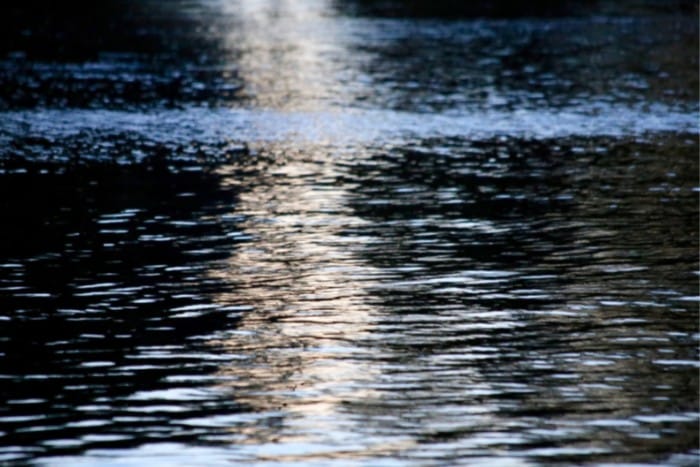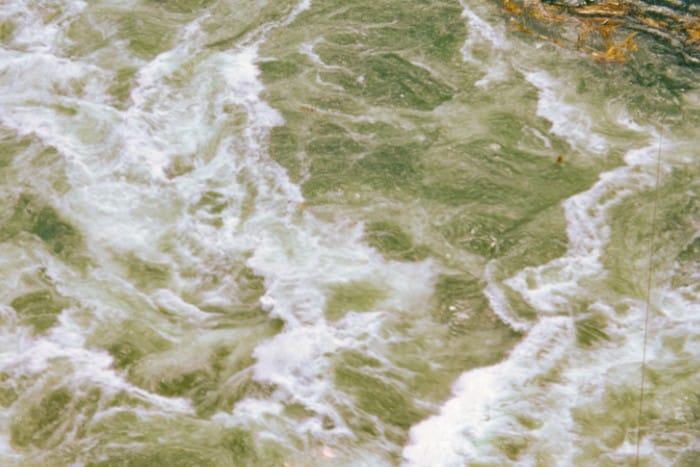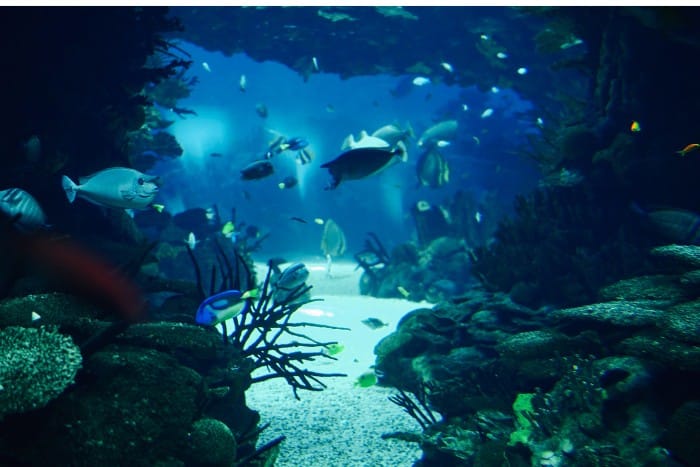When an angler looks at a body of water, it’s more than just some waves and weeds. It’s a life source filled with fish that provide hours of mystery and challenge. It takes more than casting a line into the water and waiting for something to strike. It’s important to know where fish live and be able to locate them by surveying the water.
In lakes, rivers, streams, ponds, as well as the ocean, fish are guaranteed to be by two things: food and structure. Fishermen can catch fish in shallow water as well as deep water, so as long as there is a food source nearby and a place to find cover in case of predators, fish can be caught.
Even the most stubborn fish can be landed with patience and proper technique.
Catching Fish Near Structure
When seasoned anglers get to the water, one of the first things they look for is some sort of structure or cover.
1. Still Water
If an angler is bank fishing on still water, they’ll wander around the shore searching for submerged logs, rock piles, retaining walls, dams, and even things like weed lines.
All of these can act as areas of safety for fish of all sizes. Fish will hide near, under, or inside the cover if they know predators like birds, turtles, or larger fish are nearby.
Even when they’re feeding, they won’t venture too far away in case they sense something near. Another place anglers will look to fish is near points and drop-offs.
Drop-offs mean different water temperatures as well as various food sources. Plus, drop-offs generally have a decent amount of cover nearby for the fish to hide as they’re cruising in the area.
If anglers can get onto a boat, they’ll usually try to use sonar or other pieces of technology to help them mark fish or locate structure.
Even with modern technology, anglers want to find the same things: structure and food.

2. Moving Water
If anglers fish moving water like rivers and streams, they look for slack water with good “holding areas.”
These holding areas include pools, eddies (bends in the river or slack water off the side), cut banks (deep water under the banks of the river), or pockets (slack water behind rocks or logs).
These holding areas are usually filled with fallen logs, rocks, and other structure that works perfectly for fish. Casting above these holding areas and letting the bait fall into them can lead to numerous fish.
Plus, the slack water areas are funnels for food. Smaller bait like minnows flock towards the slower-moving water in an effort to find food for themselves and use less energy.
Fish of all sizes sit in the holding areas to try and conserve energy. Whether it’s a salmon in the spawning process or a small brook trout, slow water is where fish are going to hold.
While it may be a bit less oxygenated, it still has enough resources for it to keep fish alive and healthy.
Catching Fish Near a Food Source
Food sources for fish include insect hatches, bait pods, vegetation, and fish beds filled with eggs. Different fish desire different food sources, so the areas they congregate in depend on what they’re hoping to eat.
1. Still Water
In the mornings and evenings, insect hatches regularly occur in freshwater. If you’re able to time the hatches properly and match your bait to the hatch, you’ll have plenty of success landing fish.
Bass, trout, and panfish will feed on these insects as they transition to the adult stage. If the fish you’re targeting don’t want to eat insects, then it’s important to look for bait balls.
Bait balls are groups of minnows or smaller fish that travel together. Various fish can make up these bait balls.
Small sunfish, shiner minnows, shad, and even sucker minnows will travel in packs in an effort to protect themselves.
Pike, bass, trout, and other predatory fish will hang out near these bait balls to get themselves an easy meal. As soon as one fish strays, the larger predatory fish strike.
While these bait balls aren’t always easy to spot, an excellent place to start is near the shore. Minnows will spend time in shallow water, so it’s an easy place to begin.
Anglers with sonar can spot these bait balls as they’re traversing the lake. Using a matching soft plastic and jigging it near the bait ball is almost a guarantee for success.
The final area anglers will generally find fish is near weed lines.
Fish will eat the aquatic vegetation, but they also know weed patches and weed lines are common areas for aquatic insects as well as baitfish to hide.
2. Moving Water
The food options in moving water aren’t overly different than in still water. Hatches will still occur throughout the mornings and evenings.
Fish will generally feed at these times due to the ease of access to the insects.
Large schools of bait are still found throughout larger rivers, but in small rivers as well as streams, they aren’t overly common.
Small groups of bait will swim together in slack water, waiting for the opportunity to feed. Predatory fish will work the bait pods solo.
If you see minnows and other bait swimming, make a cast near them with a matching bait, and you’ll be in luck. Predatory fish will spend time near weeds in moving water.
The same things found in still-water weed lines are available to fish in moving water vegetation. It’s a perfect place for insects to begin the hatching process.

Catching Fish in Shallow Water
In shallow water, fish will spend time in cover. They’re more susceptible to predators, so they must ensure the cover is close enough to protect them.
They’ll dart in and out of protected places to feed and sun themselves, but most of their time is spent in protection unless they’re a larger fish with few worries about being attacked.
Look for laydowns, shaded areas, and rock piles if you hope to catch fish in shallow water. Cast near them and give your bait plenty of action. It won’t take long for the fish to leave their hiding places and strike.
Catching Fish in Deep Water
Fishing in deeper water can be a bit more of a challenge, especially if you don’t have sonar. However, if you are able to locate a drop-off or any sort of underwater structure, you’ll have a chance at finding fish.
Also, if you can find a drop-off, you can work your way along it and have plenty of opportunities to catch fish.
Get your baits to the bottom and slowly work them up the water column. With a lively, soft plastic and various jigging techniques, you’ll eventually figure out what the fish are wanting.

Conclusion
Finding the areas where fish like to congregate isn’t easy. Their tendencies can change due to weather and time of year, but they follow similar patterns despite any environmental changes.
Food and structure are their two priorities, so their movements and tendencies can be dictated by the location of those things. However, bodies of water are best learned through experience.
Taking the time to cover as much water as possible with various baits is going to provide you with the most accurate reading of where the fish sit. With patience and persistence, fish can be found.
